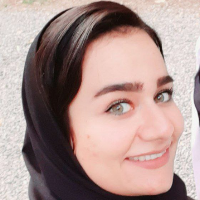Identification and pathogenicity of Alternaria infectoria isolated from Jand trees (Prosopis cineraria) having canker symptoms in Iran
In the spring and summer of 2021, stems and branches of Jand trees (Prosopis cineraria L.) with canker symptoms were collected from the forests of Sahara-Sandy region, Sistan, and Baluchestan province, Iran. Disease incidence was calculated by counting the number of infected trees and part of each tree, ranging from 70 to 100%. Stems and branches with canker symptoms and necrosis were incubated at room temperature in a moist chamber and Water-Agar 2%. After seven days' incubation, black conidia and conidiophores developed. A fungus belonging to the genus Alternaria was isolated from surface-sterilized samples. To identify isolates by morphological criteria, purified cultures were incubated at 23-25°C on Potato Carrot Agar (PCA) medium under 8/16 h light/ dark cycle photoperiod for 5-7 days (Simmons, 2007). Based on morphological characteristics such as colony color, sporulation pattern, sizes of primary and secondary conidiophores, conidia, and surface ornamentation of conidia, isolates were grouped into infectoria sections of Alternaria. On PDA after 7 days, colonies dark with gray aerial mycelia. Conidia were obclavate in long or short chains predominantly with longitudinal septa (Figure 2). The isolate was further identified by sequencing the internal transcribed spacer (ITS) region, glyceraldehyde 3-phosphate dehydrogenase (gpd), and plasma membrane ATPase (ATPase) (White et al. 1990; Berbee et al., 1999). In phylogenetic tree is constructed for the Infectoriae section based on three gene regions (Poursafar et al. 2017; Marin-Felix et al., 2019), the S3BK isolate lied with Alternaria infectoria CBS 210.86, and A. frumenti CBS 119401 in the same clade.



